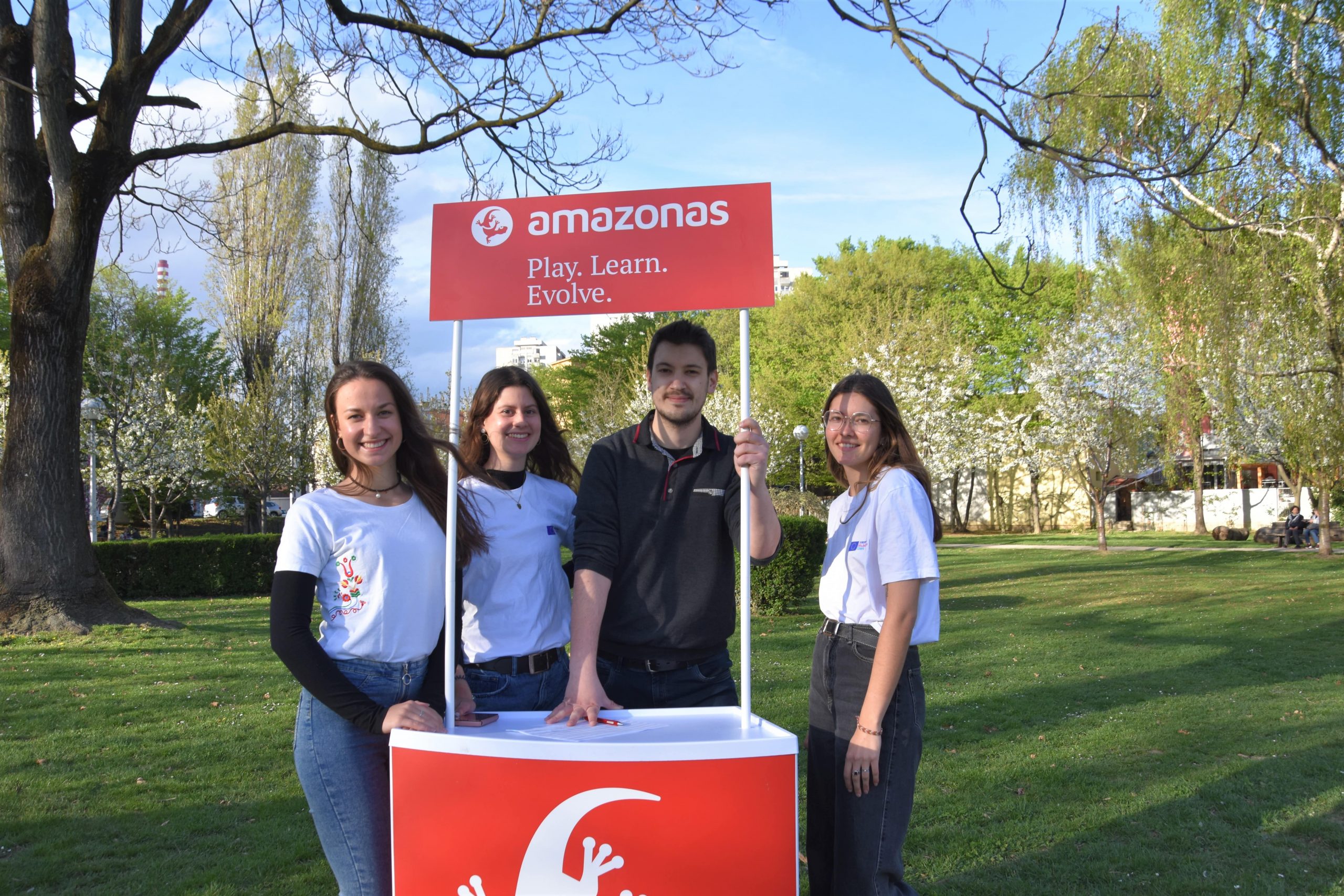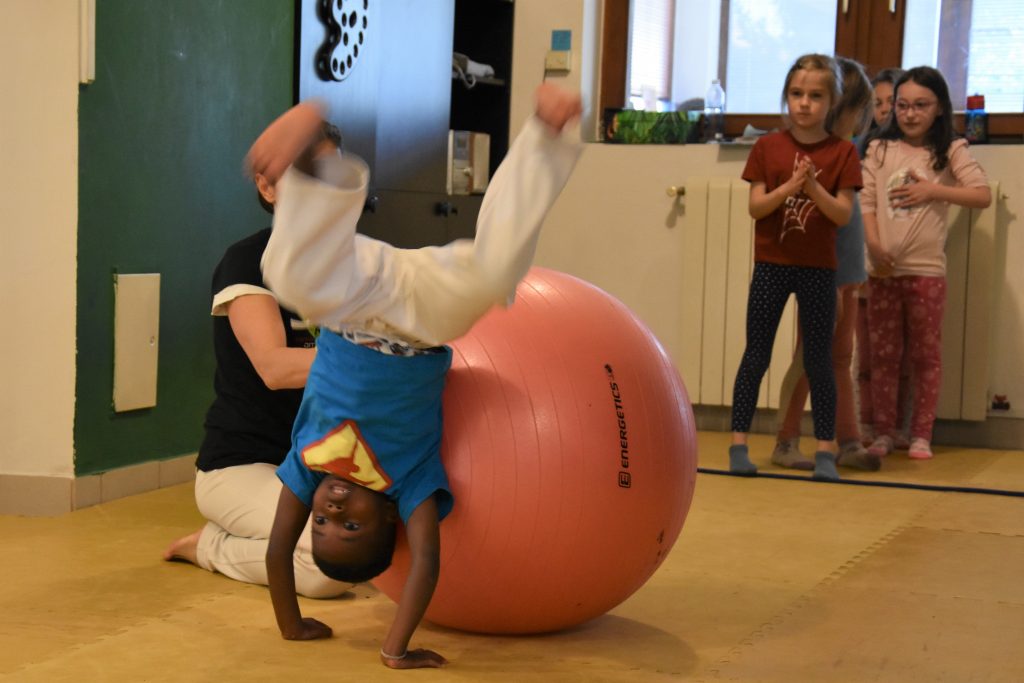Hello everyone! Spring has finally arrived and I am sure you are all enjoying the sunny weather as much as I do! With the arrival of sunny days, Amazonas organized an outside festival „Spring on Trešnjevka“ from the 4th to the 14th of April. These 10 days were filled with a multitude of workshops organized by either us volunteers or Amazonas trainers. The goal of this festival was to offer open classes for people to join and participate in the regular activities. In this article, I will tell you more about how this festival went and how did the activities look like.
What is Spring on Trešnjevka?
I am sure you have all heard about the Brazilactica festival. If not, it was a festival about the Brazilian culture, Amazonas had organized in the past years. However, the activities of Amazonas have broadened and it is not just focused on capoeira anymore. Therefore, it was time for the festival to evolve as well. Instead of just teaching about Brazilian culture, capoeira, and the instruments new activities were added. That also means that the name Brazilactica is not fitting anymore and the Spring on Trešnjevka was born!
Workshops during Spring on Trešnjevka
Capoeira for kinergardeners
Unfortunately, because of the rainy weather of the previous days, Monday activities had to be moved inside. One of them was also our first capoeira for kindergarteners. But that didn‘t make it any less interesting and fun! Except for the regular students, new children joined the class. By playing fun games such as „Ledena baba“ children learned how to do the basic capoeira moves.
Capoeira for adults
Same as with the children, the adult group had to be moved inside. It was a fully girls‘ class where they worked in pairs and could experience what our typical trainings look like. Warming up, learning new kicks and moves, practicing in pairs but mostly having FUN!

Capoeira music class
We have taken over the park on Wednesday evening with the tunes of the capoeira instruments and the English chatter. In the Capoeira music class, people could try and learn how to play instruments like berimbau, pandeiro, agogô etc. This allowed them to experience at least a small glimpse of the roda atmosphere. Instruments are an important part of every Roda. Therefore, learning how to play them can lead to you helping to create that great atmosphere during the next Roda. Passerby people often stopped by to watch and listen to the music.
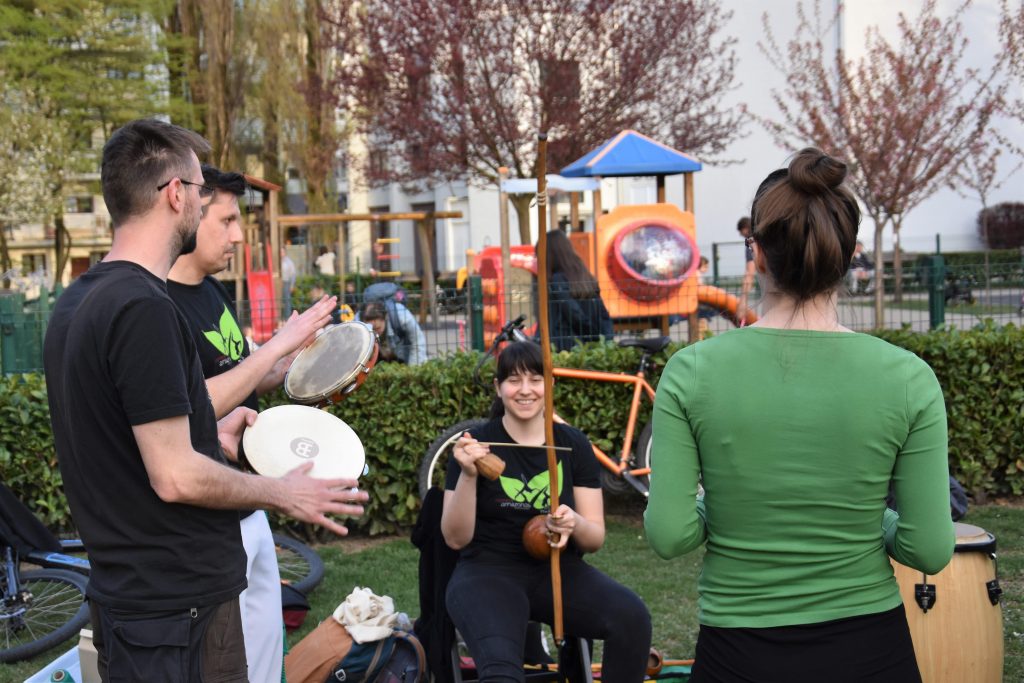
Capoeira for kids and parents
During this interesting class, parents had an opportunity to join their children during the practice. They could not only learn some capoeira moves and experience what children do during trainings. It was also an amazing bonding time for them. It was a beautiful sunny day, all the trees in the park blooming so what a better way to spend your time with your child right?
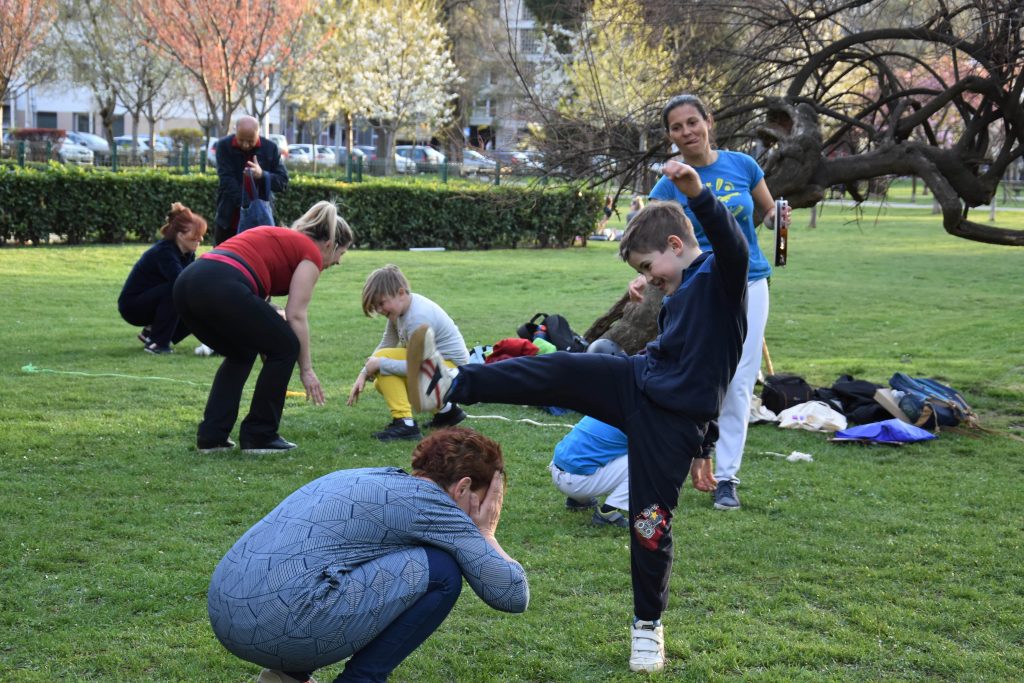
Capoeira for elementary schoolers
In this class, we had a very broad age range of children. They ranged from a little 5 year old boy to 14 year old girls. It was very nice to see them all interact together and the older girls pairing up with the younger kids. They had fun playing games, running around the park with the trainer. As well as, learning new kicks which they practiced in pairs. You could see parents standing or sitting around watching their children enjoy the outside activities.

German café
On Tuesday Katrina had a German class. Because of the good weather, it could be outside. So, the participants learned how to say the basic greetings and how to introduce themselves. During the speed dating, they had an opportunity to practice their newly learned skills. They have also talked about the stereotypes regarding Germany. For example, how Germans are supposed to be always on time. Which Katrina immediately refuted since she is a living contradiction to that.

English café
At the same time as Capoeira music class, I had a conversational English class on the other side of the park. We have discussed what solidarity is. I also asked them what solitary actions have they done or were done for them. Surprisingly, we have discovered that it is much harder to come up with an example of an action that was done for us! We touched a bit on the topic of inclusivity as well. Both are very easy topics right? But I chose these topics because that is what this whole project is about. These are also topics that we do not discuss enough in my opinion.

French Café
The French Cafe was extra special because Vale had French friends visiting. Therefore, the participants had a great opportunity to practice their new speaking knowledge. First, there was a speed dating where every time 1 Croatian was paired with 1 French person. So everybody learned something and had the opportunity to practice and hear some French. They also did a little cultural exchange. Participants learned about life in France. In the end, they tried a French apero with Saucisson, the French cheese. Croatian people also brought some local meat to make the French people try!
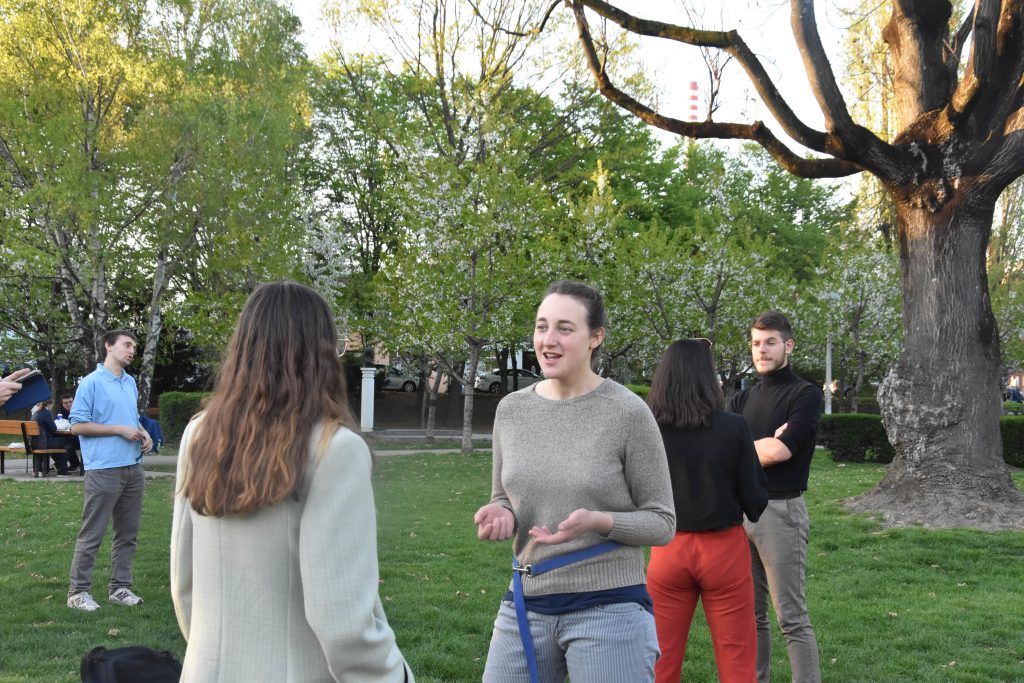
Intercultural evening
On Friday evening we came together in the park to talk about our different cultures and countries. First, we played a little game of facts to see how much the participants know about our countries. We read an interesting fact and participants had to stand behind one of us (the representatives of our countries Slovakia, France, Germany) when they thought a fact talks about our country. Funnily, sometimes not even a French participant knew the facts about his own country. We also shared some theoretical information about our countries. Whether they were tips for what to do when you come to France, beautiful and unique words in German, or interesting Slovak people. Participants also learned a traditional folklore dance move from each of our countries. As a bonus, our Turkish participants taught us their typical wedding dance as well! And of course, in the end, we served traditional dishes from our countries.
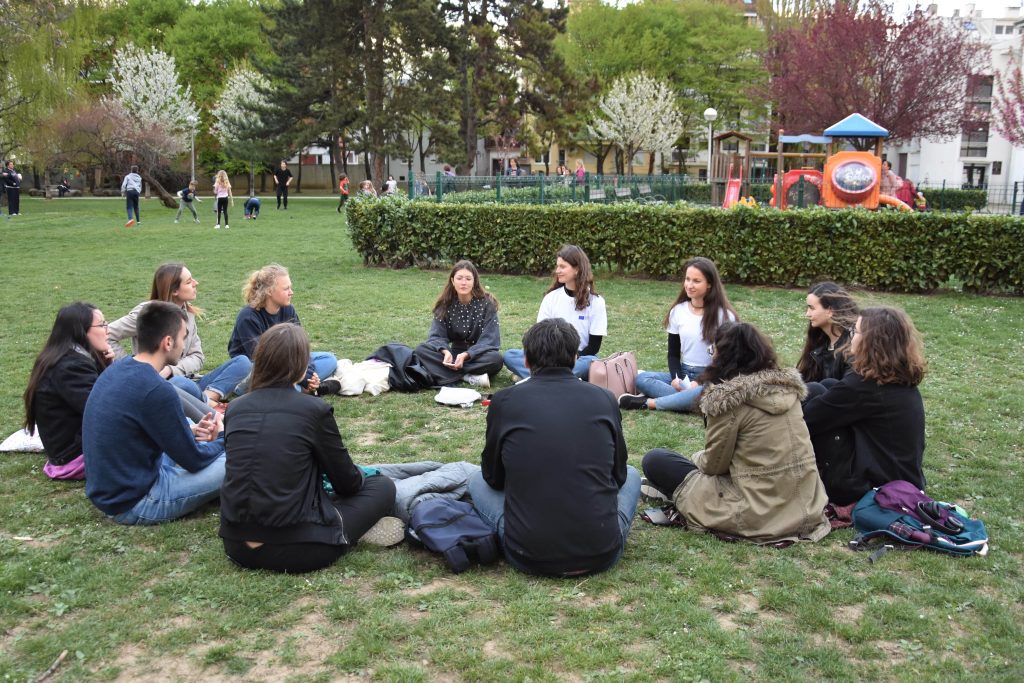
Jazz modern dance
To add a little bit of different movement than just capoeira to the mix Katrina has organized a Modern Jazz dance workshop. During this hour and a half, the participants could learn a short choreography. They had a chance to see what the normal classes look like. So, first, a little warm up dance is necessary! Followed by learning a few basic moves and turns. And lastly, slowly learning the parts of the choreography.

Overall, we had full 10 days filled with lots of fun activities. People had an opportunity to participate in different capoeira practises, learn about different cultures or have discussions in different languages. I hope you had an opportunity to participate in at least one of them! And if not, hopefully this article will motivate you to participate next time!
Hanka

